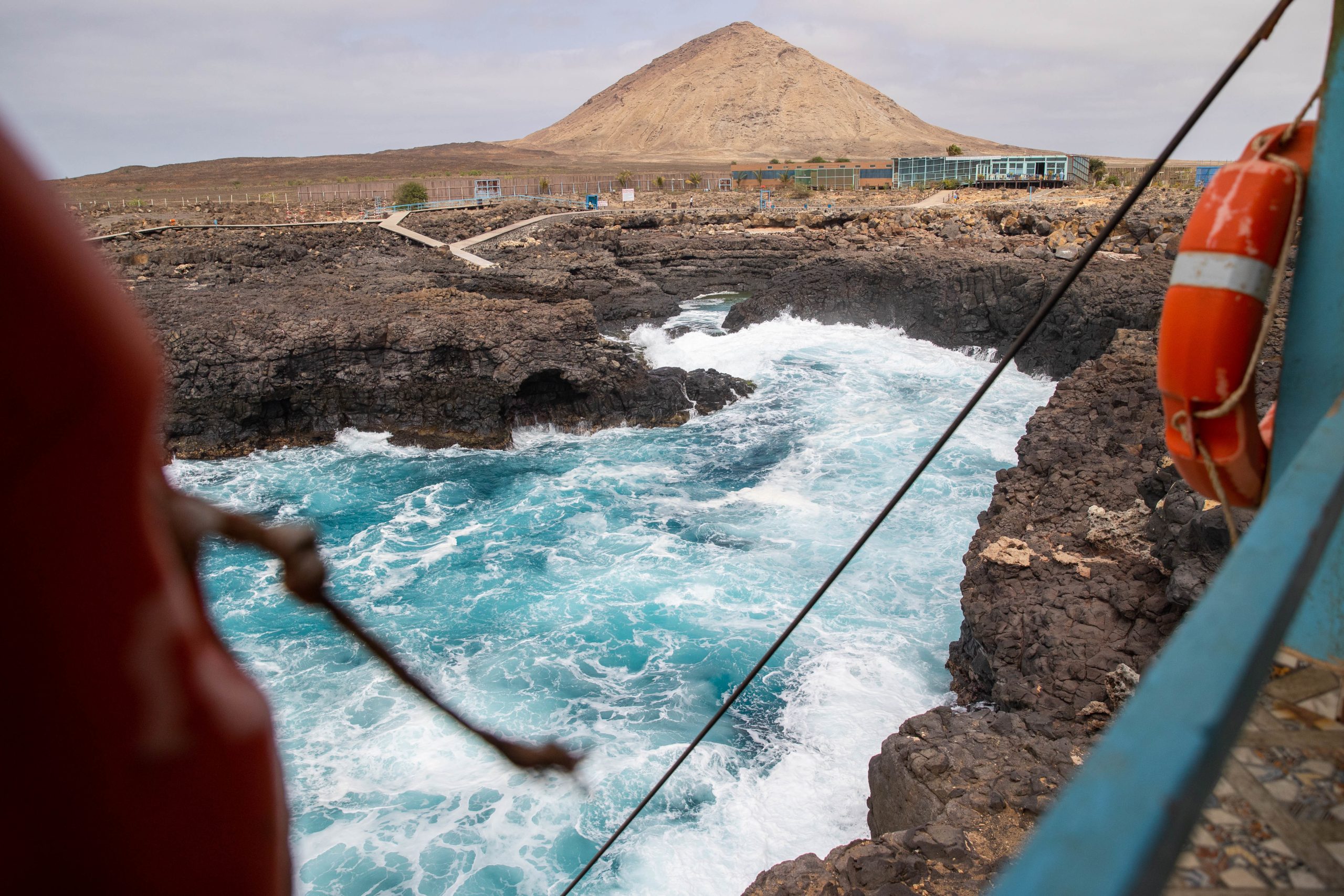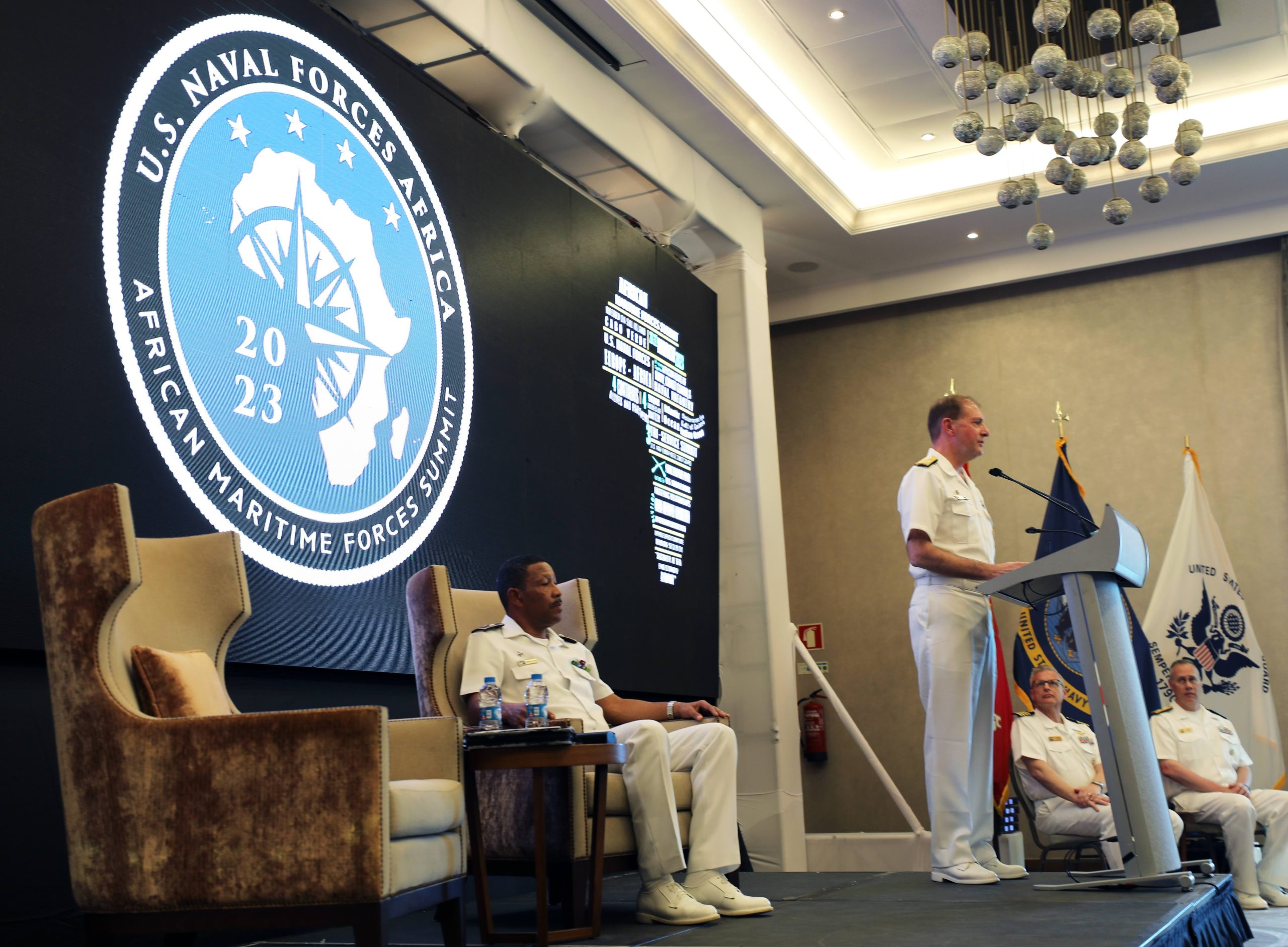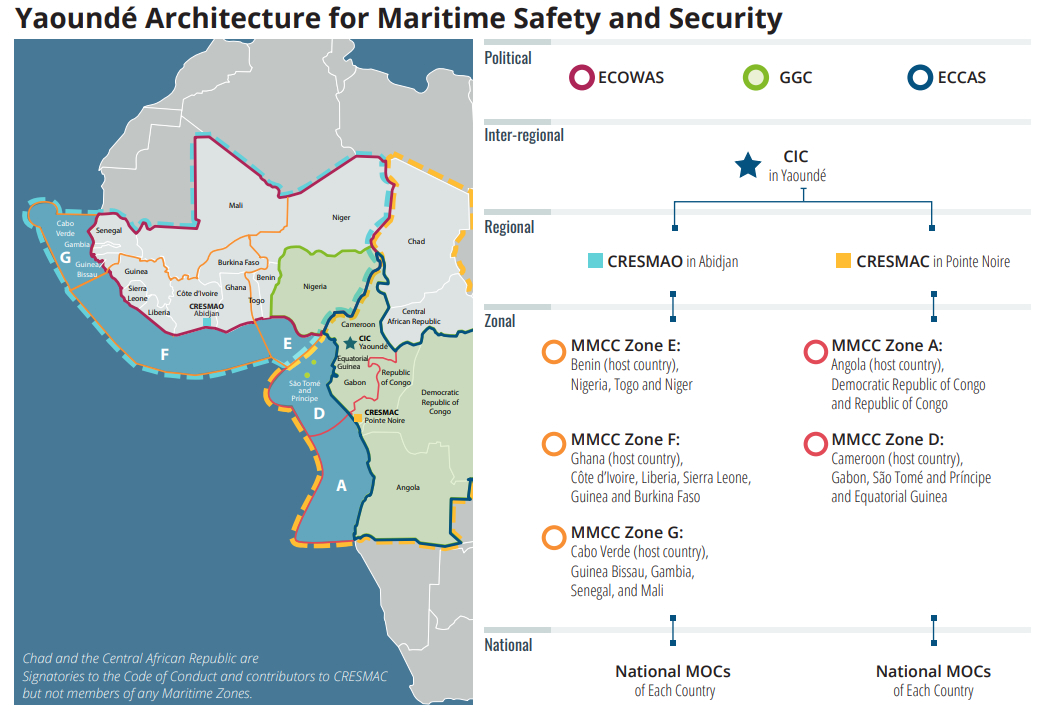
NEWPORT, R.I. – Faced with an annual $10 billion loss from Illegal, unreported and unregulated fishing, West African nations are moving to work together to better understand and police their exclusive economic zones as a group, the head of U.S. Naval Forces in Europe and Africa told USNI News last month.
IUU fishing has replaced violent petrochemical piracy as the prime maritime challenge off the coast of West Africa, Adm. Stuart Munsch told USNI News at the sidelines of the International Seapower Symposium on Sept. 20. Distant water fishing fleets from China and other countries exploit the lack of enforcement of West African country’s EEZs, resulting in an estimated $10 billion regional loss annually, according to a September report from the Stimson Center.
“IUU fishing in West Africa is perpetrated by foreign, regional, and domestic fishers. Foreign distant water fishing fleets from the European Union (EU), Russian Federation, [People’s Republic of China, Republic of Korea and Turkey target and exploit West Africa’s rich fishing grounds, out-competing artisanal fishers and damaging marine habitats. Poor monitoring, control, and surveillance (MCS) and enforcement capacity results in foreign vessels overfishing and underreporting their catch,” reads the report.
Now, nations along Africa’s west coast are in the early stages of creating a joint network to take on IUU fishing with the same underlying cooperation that reduced piracy in the Gulf of Guinea, Munsch told USNI News.
“They all have this common interest in sort of a simultaneous awakening to the value of their exclusive economic zones and how much value they were losing due to illegal activity,” he said.
The idea for a combined push emerged at the first African Maritime Forces Summit held in March at Cabo Verde organized by NAVEUR. Navy Secretary Carlos Del Toro and Coast Guard Commandant Adm. Linda Fagan represented the U.S. along with 80 other countries.
“The phrase that came up at that conference was, ‘Blue Africa.’ And so we’re banding together with them to, again, enable them to better protect their EEZs,” Munsch said.

Attendees included representatives from Angola, Benin, Brazil, Cabo Verde, Cameroon, Comoros, Cote d’Ivoire, Democratic Republic of Congo, Djibouti, Egypt, Equatorial Guinea, France, Gabon, Ghana, Guinea Bissau, Italy, Kenya, Liberia, Libya, Madagascar, Mauritania, Morocco, Mozambique, Nigeria, Portugal, Republic of Congo, Sao Tome and Principe, Senegal, Seychelles, Sierra Leone, South Africa, Spain, Tanzania, The Gambia, Togo and Tunisia.
In addition to the U.S. and Europe, South American countries such as Brazil have deep economic and cultural ties with Africa that overlap with transnational crime.
Many of the nations on Africa’s west coast have a small coastline and limited maritime awareness and sometimes even less enforcement capabilities, Munsch said.
“If you were looking at the EEZs for some of the smaller nations, [domain awareness is] very, very difficult. If you look at, like, Seychelles and their population, but they have almost 200 islands, so they’re EEZs is huge … There’s a real need here,” Munsch said.
The outline established at the conference at Cabo Verde was to create a construct similar to the more than 30-year-old Joint Interagency Task Force South in U.S. Southern Command.
JIATF South incorporates a variety of U.S federal agencies including the U.S. military, U.S. Coast Guard and the Drug Enforcement Agency, among others. Best known for interdicting transnational crime organizations in the Caribbean Sea and the Eastern Pacific, JIATF South has legal authority from a blend of bilateral agreements between the U.S. and Central and South American countries.
Moving ahead, there are several steps to stitch the nations together to create the overarching Blue Africa construct, Munsch said.
“First of all, you have to know what’s going on – so an emphasis on maritime domain awareness. The second thing is that you have to be able to interdict and intercept the illegal activity,” he told USNI News.
Following awareness, the participating countries would need to establish a legal framework to prosecute the EEZ violations, establish interagency frameworks and connect the countries.
“It’s working with each nation according to their speeds. It’s their priorities. Some are able to move more quickly than others. We are encouraging partnership wherever possible, so that they can leverage each other’s strengths. Even the small countries may not be able to feel as much for maritime domain awareness or interdiction. capability, but they could have a strong judicial system,” Munsch said.
They are moving through the established Yaoundé architecture for maritime safety and security.
Established in 2013 in Yaoundé, Cameroon, the architecture divides Africa’s west coast in zones A through G and established a code of conduct and a construct to work together.
 West Africa is encompassed by Groups A, D, E, F, G.
West Africa is encompassed by Groups A, D, E, F, G.
- Group A: Angola, Democratic Republic of Congo and Republic of Congo
- Group D: Cameroon, Gabon, São Tomé and Príncipe and Equatorial Guinea
- Group E: Benin, Nigeria, Togo and Niger
- Group F: Ghana, Côte d’Ivoire, Liberia, Sierra Leone, Guinea and Burkina Faso
- Group G: Cabo Verde, Guinea Bissau, Gambia, Senegal and Mali
As the construct is brought together In the shorter term, the countries are looking for equipment.
“Everybody’s interested in unmanned aerial vehicles because they, relatively inexpensively, can give them awareness of what’s going on in their EEZs much cheaper than manned aircraft. There are radars [that] go along with that, of course, and then we have helped many of them build an operation center where they use a product called SeaVision, which leverages [automatic identification system] reporting that the UAVs will help them find those that don’t have AIS,” Munsch said.
Interdiction equipment and ships are a tougher get.
“It’s more expensive for them [to] move on to interdiction because you have to have some ships and many of them struggle with that. They’ve been given donations. And so they have just as many miscellaneous different things ,which are hard to maintain because of the lack of uniformity. So one of the ideas that had been talked about [is] a standard African patrol vessel that somebody could develop.”
USNI News previously reported from ISS that military and economic pressure, primarily from China, was moving more nations to seek new relationships and expand their naval forces like the Blue Africa effort.
“It’s really the African priorities and then assisting with that where we can is the focus of all of us, and that that’ll make the whole region more stable and and then give them what is rightfully theirs in terms of their the resources they have in their EEZs,” Munsch said.
“We’ll move out at their pace. We’ll try to always find opportunity to help them move things more quickly – if they have that interest. There’s no final goal point… This will be standing steady effort.”





